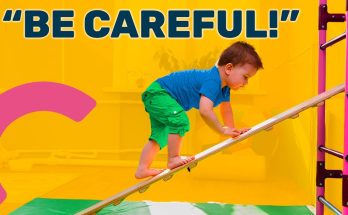Whining is one of the most frustrating behaviors that toddlers develop, and it can test even the most patient parents. While it’s natural for young children to express their needs through whining occasionally, certain parenting responses can unintentionally reinforce and encourage this behavior. If you find yourself dealing with constant whining, you might be making a critical mistake that teaches your toddler to whine even more.
The good news? Once you recognize this mistake, you can correct it and help your child develop better communication skills. Let’s explore why toddlers whine, the common parenting mistake that reinforces whining, and how to respond in a way that encourages positive behavior.
Why Do Toddlers Whine?
Whining is often a toddler’s way of expressing frustration, discomfort, or a desire for attention. It usually happens when they feel tired, hungry, overwhelmed, or ignored. Toddlers are still learning how to communicate their feelings effectively, and whining often becomes their go-to method when they realize it gets a reaction.
Whining can also be a learned behavior. If your child notices that whining results in them getting what they want—whether it’s attention, a toy, or a snack—they are more likely to continue using it as a strategy.
The Mistake That Teaches Toddlers to Whine
One of the biggest mistakes parents make is giving in to whining.
When a toddler whines, it’s tempting to give them what they want just to make it stop. Whether it’s handing over the cookie, turning on their favorite show, or picking them up when they cry in a high-pitched voice, giving in teaches them that whining is an effective way to get what they want.
For example:
- Your child whines for a cookie before dinner. You say no at first, but after they keep whining, you give in.
- Your toddler complains in a whiny voice that they don’t want to put on their shoes. Instead of standing firm, you put the shoes on for them to avoid a meltdown.
- Your child whines for you to carry them instead of walking. Even though they can walk, you pick them up just to stop the whining.
Each time you give in, you reinforce the idea that whining is a successful strategy. Over time, your toddler learns that whining is more effective than asking politely or waiting patiently.
How to Stop Your Toddler from Whining
1. Don’t Give In to Whining
The first and most important step is to stop rewarding whining. If your child whines and you don’t give them what they want, they will eventually learn that whining doesn’t work.
Instead, calmly tell them:
- “I can’t understand you when you use that voice. Please ask in a calm voice.”
- “I will listen when you talk to me nicely.”
It may take some time for your child to adjust, but if you stay consistent, they will realize that whining won’t get them results.
2. Teach Them a Better Way to Communicate
Since toddlers whine because they don’t yet have strong communication skills, it’s important to teach them how to express their needs properly.
- Encourage them to use words instead of whining. If they whine for a snack, say: “Can you ask me in a nice voice?”
- Model the behavior you want to see. Speak in a calm and respectful tone, so they learn by example.
- If they are too young to verbalize well, teach them simple phrases like “help me” or “please.”
The more you help them develop communication skills, the less they will rely on whining.
3. Give Positive Attention Before They Need to Whine
Sometimes toddlers whine because they feel ignored or disconnected from their parents. By proactively giving them positive attention, you can prevent whining before it starts.
- Spend quality time with them throughout the day, even if it’s just a few minutes of focused play or cuddles.
- Praise them when they use a calm voice: “I love how you asked so nicely!”
- Make sure their basic needs (food, rest, and emotional connection) are met so they don’t feel the need to whine for attention.
4. Stay Calm and Consistent
When your child whines, it’s easy to get frustrated, but responding with anger or irritation can make it worse. Instead, stay calm and consistent.
- If they continue to whine after being reminded to use a calm voice, don’t engage. Let them see that whining doesn’t get your attention.
- Use natural consequences. If they whine for something they can’t have, simply say, “I hear that you really want it, but the answer is no.” Then move on without further discussion.
- Be patient. Breaking the whining habit takes time, but if you stay firm, your toddler will learn that whining is not the way to get what they want.
Final Thoughts
Whining is a common phase in toddlerhood, but it doesn’t have to become a permanent habit. The key is recognizing the mistake of giving in and instead teaching your child better ways to communicate. By staying firm, encouraging polite requests, and giving positive attention, you can reduce whining and help your toddler develop strong communication skills.
With consistency and patience, you’ll soon notice your little one using their words instead of that high-pitched whine—and that’s a win for both of you!



